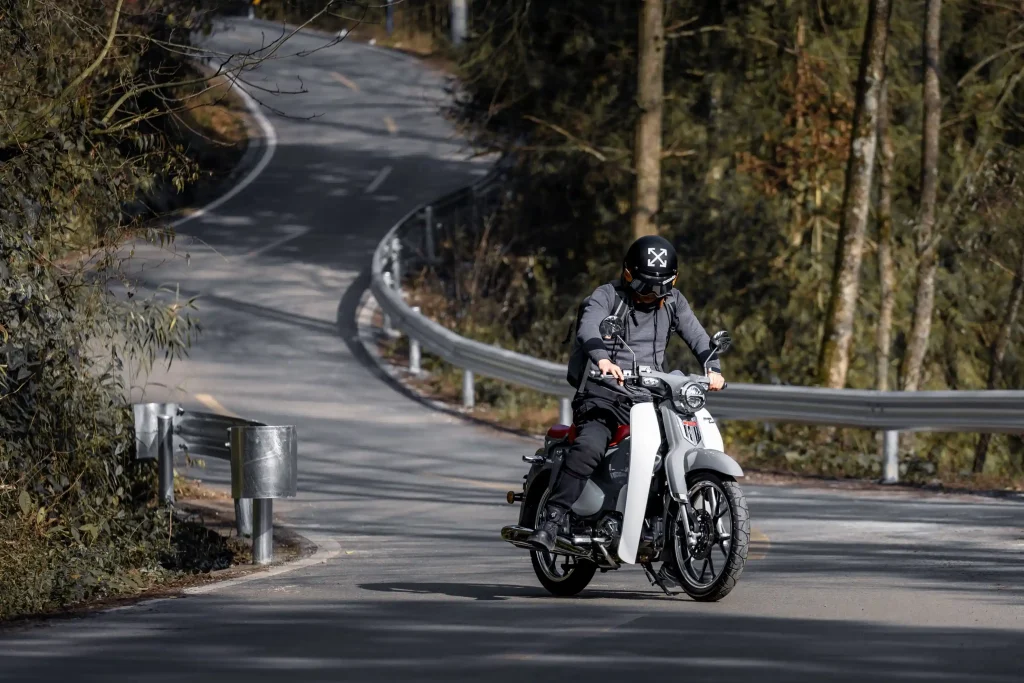In the evolving world of two-wheeled transportation, the Cub motorcycle remains a quiet but dominant force. Known for its step-through frame, minimalist design, and exceptional fuel efficiency, the Cub—popularized globally by the Honda Super Cub—has become an indispensable vehicle across Asia, Africa, Latin America, and the Middle East.
But there’s a shift underway. As global supply chains adapt and demand for value-oriented transport grows, Chinese motorcycle manufacturers are not only replicating the Cub’s design principles—they’re optimizing them.
At the center of this transformation are 125cc and 150cc Cub motorcycles produced in China’s modern motorcycle factories, engineered for durability, economy, and export readiness.
This article explores the reasons behind the Cub’s enduring success, the manufacturing revolution in China, and why B2B importers, wholesalers, and OEM buyers are increasingly looking east for their Cub solutions.
🌍 Chapter 1: A Global Platform Built for Utility
The Cub format—commonly referred to as an underbone motorcycle—is not a new concept. It originated in the 1950s with Honda’s vision of an “everyman’s motorcycle.” Over decades, the platform proved itself:
- Lightweight and maneuverable for urban traffic
- Easy to maintain with semi-automatic gearboxes
- Durable enough for rough roads and heavy daily use
- Fuel efficient for long-term affordability
Today, Cub motorcycles are the backbone of urban logistics, commuter mobility, and small-scale business transport in:
- 🇮🇩 Indonesia: Over 60% of the two-wheeled fleet includes Cub variants
- 🇳🇬 Nigeria: Cub-style bikes dominate informal transport
- 🇵🇪 Peru & 🇪🇨 Ecuador: Used by delivery companies and municipal workers
- 🇪🇬 Egypt & North Africa: Deployed by tradesmen and street vendors
Even in the age of EV scooters and ride-hailing apps, Cub motorcycles remain relevant—precisely because they are simple, cost-effective, and field-proven.
🏭 Chapter 2: The Manufacturing Shift — Why China’s Cub Factories Are Winning
In the past decade, China has quietly become the world’s largest motorcycle exporter by volume. Cities like Chongqing, Taizhou, and Wuxi are now global hubs for Cub motorcycle production. What makes Chinese manufacturers like Kamax Group so competitive?
1. Vertical Integration
Modern Chinese motorcycle factories consolidate R&D, frame welding, engine assembly, painting, and testing under one roof. This enables:
- Consistent quality control
- Shorter production cycles (as low as 30 days)
- Full customization for OEM motorcycle projects
2. Component Ecosystem
Surrounding each factory is a dense network of motorcycle parts suppliers, including:
- Carburetor and EFI providers
- Plastic and fairing producers
- Electric wiring and LED system factories
- Seat and exhaust pipe manufacturers
This ecosystem lowers lead time and allows flexible specification changes for different markets.
3. Export Orientation
Unlike domestic-focused brands, companies like Kamax have tailored their Cub offerings to meet international requirements:
- EPA, EEC, CCC, and ISO9001 certifications
- Export packaging optimization (CKD/SKD/full-assembly)
- Regional emission tuning (Euro 3/4/5, carburetor vs. EFI)
- Market feedback loops from 100+ countries
🔍 Chapter 3: Cub vs. Scooter vs. Street Bike — Strategic Positioning in the Global Market
When global buyers select vehicle types for their markets, the Cub offers a unique positioning:
| Parameter | Cub Motorcycle (125–150cc) | Scooter (EV or Gas) | Standard Street Bike |
|---|---|---|---|
| Riding Comfort | High | Moderate | Moderate–Low |
| Cargo Capability | Excellent (rear racks) | Limited | Moderate |
| Terrain Handling | Medium–High | Low | High (but less maneuverable) |
| Maintenance Cost | Low | Medium (battery aging) | Medium–High |
| Fuel Efficiency | Very High | High (if electric) | Moderate |
| Operator Training | Minimal | Minimal | Requires clutch use |
This makes Cub motorcycles a versatile “middle-ground” platform—ideal for operators who need more than a scooter, but less complexity than a street motorcycle.
🔩 Chapter 4: The 125cc & 150cc Advantage — Built for Emerging Markets
Kamax’s most requested Cub engine classes are 125cc and 150cc. Why?
- 125cc hits the sweet spot in terms of fuel efficiency and license-class accessibility.
- 150cc is preferred in hilly, cargo-heavy, or dual-passenger usage markets (e.g. Ethiopia, Kenya, Bolivia).
These engines offer:
- ~1.9–2.3L/100km fuel consumption
- Top speeds of 85–95km/h
- Long-life piston rings and reinforced crankcases
- Local part compatibility (Honda pattern engines)
Moreover, with Kamax’s motorcycle OEM solutions, clients can brand these platforms under their own trade names, with:
- Custom fairing colors
- Private logo molding
- Branded packaging and manuals
- Spec sheets adapted to local fuel and road quality
Explore Kamax Group’s range of 125cc and 150cc Cub models for detailed specifications, pricing, and OEM customization options. Visit our product page for more.
⚡ Chapter 5: EV Cub Is Coming — Quietly, Strategically
While electric motorcycle export is still dominated by scooters and delivery trikes, EV Cub models are gaining attention.
Chinese EV motorcycle factories are now converting the Cub platform with:
- 1000–1500W hub or mid-drive motors
- Swappable 60V or 72V lithium battery packs
- Analog-style body with digital dashboards
- 60–90km urban range
📦 Chapter 6: The B2B Buyer’s Perspective — Why Choose a Chinese Cub Manufacturer?
Let’s break it down:
| Advantage | Why It Matters for B2B Buyers |
|---|---|
| Factory-direct pricing | Better margins for importers & wholesalers |
| MOQ flexibility | Supports pilot batches and distributor testing |
| Full OEM/ODM service | Build your own brand identity, not just resell |
| Fast shipping & CKD options | Match your local assembly setup |
| Spare parts sourcing | Seamless with China’s motorcycle parts suppliers |
| Fuel + EV hybrid strategy | Plan for today & tomorrow simultaneously |
🏁 Conclusion: The Cub Isn’t Just Surviving — It’s Evolving
The Cub motorcycle is not outdated—it’s just matured. In a fragmented global market where durability, price, and maintainability still matter more than digital dashboards or app-connectivity, the Cub remains the best ROI per kilometer.
And now, with Chinese OEM motorcycle manufacturers like Kamax offering high-spec 125cc/150cc Cub models, full customization, and even EV versions, the platform is more powerful than ever.
So whether you’re an importer looking for your next best-selling commuter, a distributor expanding to new regions, or an OEM brand seeking your own Cub line:
China is not just an alternative—it’s the engine of the future.
📩 Request a spec sheet, MOQ quote, or sample unit from Kamax’s export team today.
KAMAX Motorcycle ODM Design & Development Serivice



